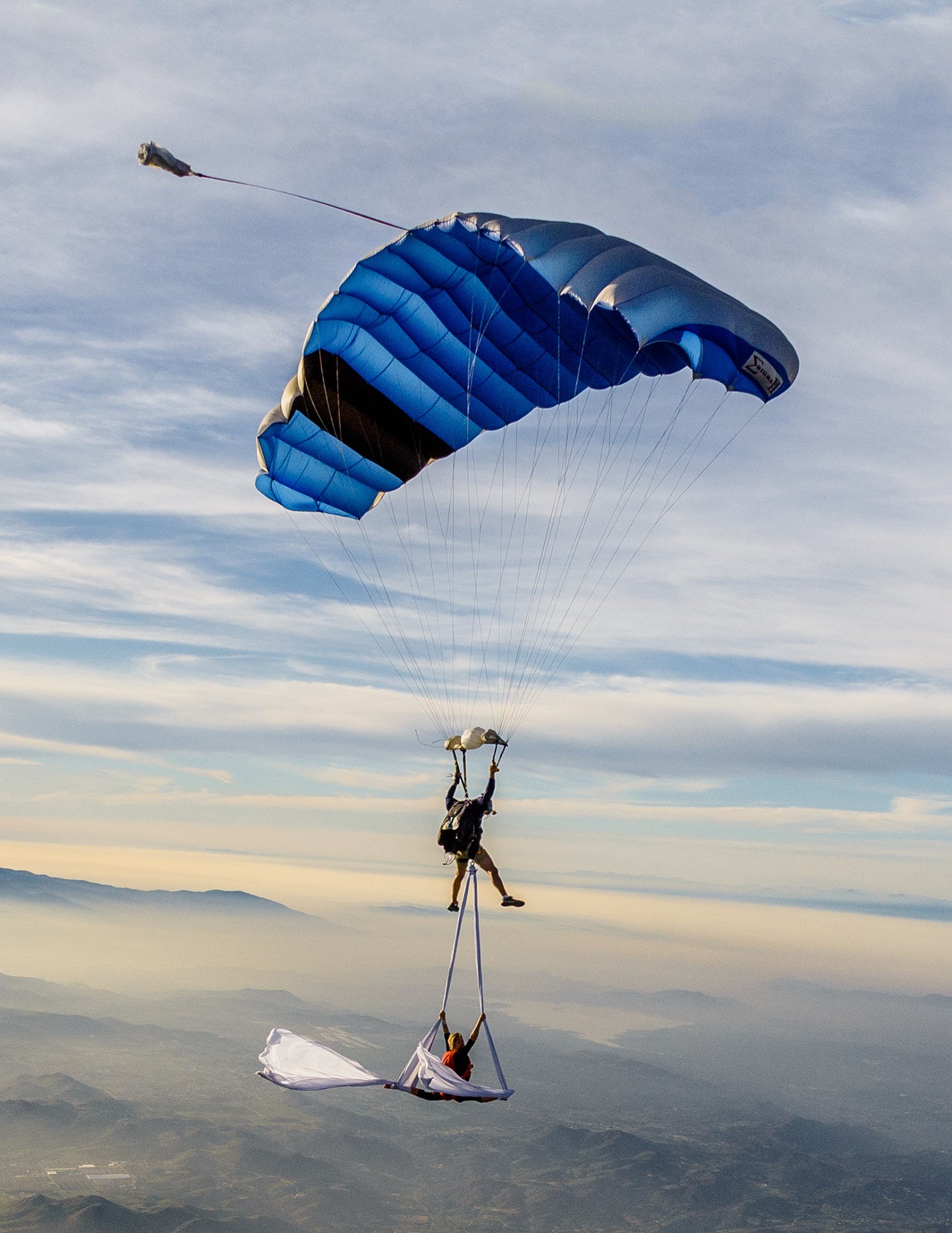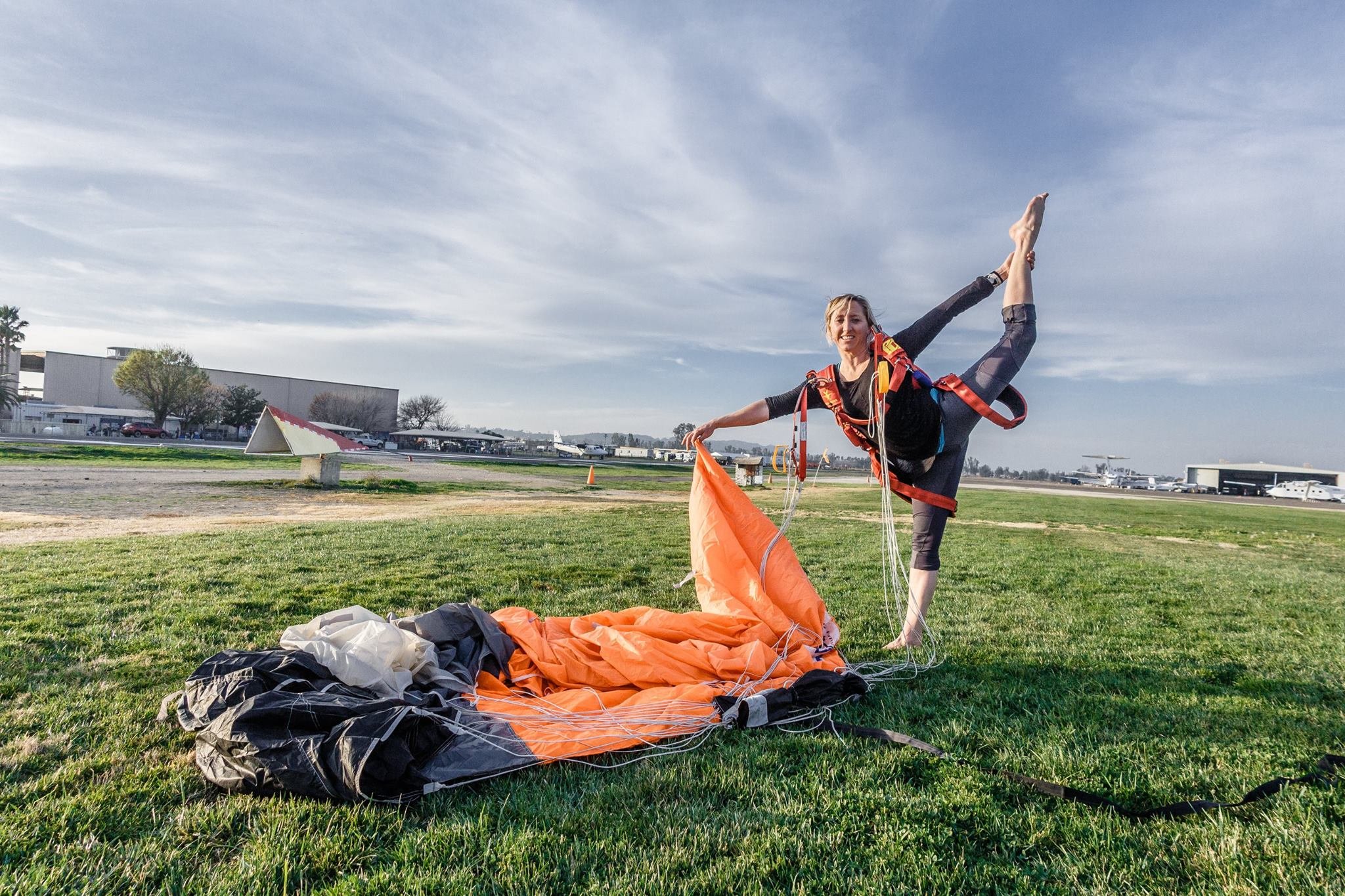Aerial Silks at 12,000 feet
March 2015
The journey began with a call to Southern California, driven by a shared vision of urban BASE jumps and the launch of the Human Sphere freefly project. As Matt Blank and I wrapped up a long, enthusiastic conversation, he left me with a parting instruction that sparked something deeper: “Bring your silks.”
I set out along the Pacific Coast Highway, one of my favorite stretches of road in the country. As the sun sank into the horizon, casting golden light across the ocean, I timed my arrival perfectly—just after midnight in downtown Los Angeles. Our plan: a stealth ascent and BASE jump from a quiet downtown LA building that was under construction. Standing at the edge, city lights shimmering below, I paused to breathe in the crisp night air, heart pounding with anticipation. Matt stood quietly beside me, tuned into the electric energy between us. I jumped—and in that moment, suspended in stillness before motion, it was pure magic.
The following morning brought us to Skydive Perris to begin the Human Sphere Project. The dives were technically refined and wildly entertaining—an ambitious concept blending formation skydiving with high-level freefly choreography. That evening, energized and inspired, we jumped another building in Orange County.
After several days of attempting the three dimensional human sphere, we captured the shot we’d been working toward. With the Sphere Project complete, our focus shifted to the next challenge: the Aerial Silks Skydive.
Our Background & Preparation
By that time, both Matt and I were seasoned professionals—USPA-rated tandem instructors with thousands of instructional jumps. We were also experienced climbers and stunt coordinators, with a strong foundation in rope work, rigging systems, and vertical performance. I brought a specialty in aerial silks to the partnership, having performed in extreme environments including a 400-foot highline over a Moab canyon and a crane rigged at 1,000 feet off the Kuala Lumpur Tower (with a BASE rig strapped to my back).
We began conceptualizing the silks skydive with care and precision. Although the rigging was relatively straightforward, we still consulted with Skydive Perris’ master rigger, Marty Jones, to ensure all systems were safe and redundant. The silks were rigged via a medium sling anchored to Matt’s main lift web at the D-rings. A rescue 8 acted as the primary hardware, positioned low across his thighs, with an integrated single-point cutaway system for quick release.
Our jump plan involved me exiting with Matt in a Mister Bill configuration, wearing my own parachute rig. Once under canopy, we deployed the silks into the 20+ mph relative wind.
The most challenging aspect of the project wasn’t the rigging—it was managing the silks in freefall and under canopy. I had envisioned performing a series of aerial poses, but the intense relative wind and drag limited my range of motion. Once I locked in my foot holds, I remained in a single orientation, with the splits offering the most visually striking position.
Matt adapted in real time, using his legs to stabilize the top tails and reduce my spin. Disentangling myself from the silks proved equally difficult; during the exit, I lost one tail as I released a foot lock—an excellent lesson in adapting rigging techniques for high-speed aerial environments.
That skydive remains one of the most technically demanding and memorable performances of my career. It fused skydiving, vertical dance, rigging, and stunt coordination into a single, high-consequence moment—and it worked because of the mutual trust, precise planning, and shared passion for pushing the limits of what’s possible in the sky.
Innovation lives at the intersection of risk and creativity. Projects like this remind me why I fell in love with flight in the first place.
photo credit: Dan Dupuis & Scotty Rodger’s







